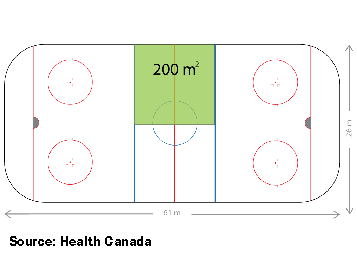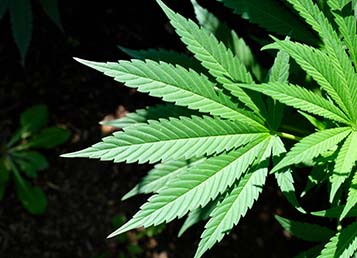The Challenge … Government restrictions for branding, marketing and advertising.
The Solution … highlight your brand instead of the product!
First… Some Background
As legalization came into effect October 17, 2018, Health Canada regulated, “under the Cannabis Act, it is prohibited to promote cannabis or a cannabis accessory or any service related to cannabis.” These rules included marketing cannabis through endorsements, testimonials or showing cannabis in “a way of life such as one that includes glamour, recreation, excitement, vitality, risk, or daring.”
The What …The How…The Why…
The government’s rules on cannabis advertising are nothing if not strict. But that has also ensured that no major brand names have emerged yet, another reason for the sector’s slow start. As the industry formed, LPs (License Producers), cannabis-adjacent companies, and retailers (including their marketing teams) had two jobs. Introduce their brand thoughtfully and strategically, while also being first to educate budtenders, reach consumers online, and think of really cool engagement.
Brand Loyalty is a real challenge given the marketing and packaging restrictions. There’s a lot more grey area than there is black and white. There is also an incentive for cannabis marketers to push the limits, since the first companies to succeed in building brand loyalty could enjoy the advantage of repeat customers for years to come. What you do have is your website. It is the hub of any information or education that you choose to share and it is the home of your brand. You own it. Make it professional, beautiful and informative.
What’s Next?
With all this change, what will cannabis marketing look like in a year’s time? How about five years? Your guess is as good as ours. One thing for sure though, expect the market to change as quickly as cannabis companies come and go.

The Legacy Market … What Is It And Are You Part Of It?
The cannabis industry in Canada is still in its infancy, only in the third year of legalization, with each province still establishing its own rules and regulations. One of the biggest challenges at this stage is the ‘black or legacy market’, which provides up to 60% of all cannabis sold in Canada.
The term ‘black market’ is getting the not too subtle heave-ho. One of the primary reasons ‘legacy market’ rather than ‘black market’ seems to be winning over the hearts and minds of the cannabis industry is that it pays respect to those who came before the regulated sector. After all, there wouldn’t be a cannabis industry if not for the tenacious efforts of many ‘legacy or craft growers’.
The normalization of cannabis use, the reduced stigma, the acceptance, and the freedom to use it legally that we have today are a direct result of the efforts and sacrifices made by ‘legacy’ growers in the not-so-distant past.
The world of micro-cultivators is blowing up since it is becoming easier to get a license. Hopefully over time, more legacy players can enter the industry to bring it back to its roots.

Definition of “Micro” Under the Cannabis Act
Health Canada issues four types of licences for cultivation (Standard, Micro, Nursery, and Hemp) and two types for processing (Standard and Micro).
For cultivation, “Micro” is defined as any operation up to 200 square metres in cultivation area. On a hockey rink, that would be about the area from the benches to the centre dot wide, and between the two blue lines long producing a maximum of 600kg of dried cannabis annually. The act includes a table that lists equivalents. For example, 1kg of dried cannabis is equivalent to 5kg of fresh plants.
For small producers this still amounts to approximately $1.5 million in startup costs. Although it’s no small investment, micro-breweries can easily reach startup costs of $1 Million or more which is not out of line with the start up costs for a craft cannabis operation.

The Difference Between Craft Cannabis Growers and Craft Brewers
The major difference between craft cannabis growers and craft brewers is direct access to their customers. Craft cannabis growers under a Micro-cultivation or Micro-processing licence can not sell directly to customers for adult use, unlike their craft brewery counterparts. The hope is that direct-to-consumer sales will happen in the future, but for the moment it isn’t.
Another drawback to craft cannabis is that they require plain packaging and limited marketing, unlike craft breweries who can create labels, giveaways, and merchandise. This has an impact on the craft cannabis grower’s ability to make consumers aware of their product(s) and promote brand loyalty.
The financial barriers to entering the cannabis market at any level are significant, but not that much more than starting a micro-brewery. Craft cannabis growers operating with micro-cultivation and micro-processing licences will be more likely to experiment with different strains producing a better quality product. Not only will this benefit adult users, it could potentially benefit medical cannabis users by encouraging development of targeted and/or more effective symptom relief with edibles and lotions. Have no doubt though, prices will likely be higher for the consumer, just as they are with craft breweries.
Get ahead of the game… Contact us now for a free consultation
The reason brand recall is such an important concept in marketing is that being at the top of a consumer’s mind can be a deciding factor in making a sale. The average customer at a bar has been so steeped in beer marketing that he or she will likely have in mind a selection of options for making an order without looking at a menu.